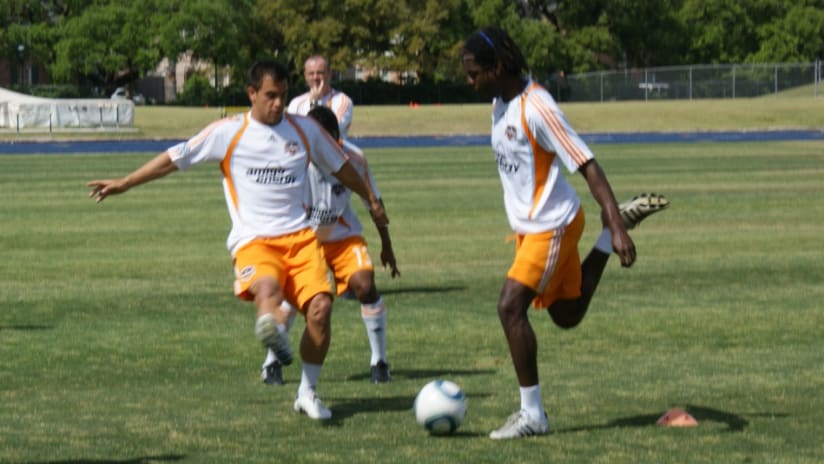Back in March, when the relieving news that a new CBA had been reached came down, few recognized how this MLS offseason would differ from others.
At that point, the Expansion Draft was still a foggy event sometime in the future. The expanded Home Grown rules were exciting for their potential, but we all knew they needed time. The Re-Entry Process was still being fully baked, its ramifications for teams and players still more theoretical than concrete.
[inlinenode:324042]But now, here we are, smack dab in the middle of the offseason. And the various mechanisms have already made this offseason one of the more intriguing ones. The Expansion Draft — with the added pressure of two teams picking — produced a rapid-fire domino effect of player moves (Dax McCarty to Portland to DC, Sanna Nyassi to Vancouver to Colorado, etc.) that has already started to re-shape many teams.
And now there is the Re-Entry Process, which got under way on Wednesday.
It was a quiet Stage 1 draft, as expected, with only two players selected (Joseph Ngwenya by D.C. and Aaron Hohlbein by Columbus). But the lead-up showed a lot about the value of players and the particular calculus that is used when a club must operate under a budget.
Most eye-popping, of course, were the marquee players like Juan Pablo Angel, Guillermo Barros Schelotto and Jimmy Conrad who were up for selection. Many people were wondering why their clubs were willing to let them go, and now that the Stage 1 draft is done, many are wondering why they weren’t picked.
Well, it’s simple, really. These decisions come down to salary pressures and the individually determined value of a player.
As any fantasy sports player or kid with a weekly allowance will tell you, operating on a budget requires tactics that have little to do with formations or set pieces. Working within the MLS salary structure necessitates ingenuity, a mesh of long- and short-term thinking, and a really good calculator. It also requires the ability to be ruthless in some ways.
“The Re-Entry Process is new this year, not only for the players, but also the teams,” New England Revolution vice president of player personnel Michael Burns said after the club declined the option on center back Cory Gibbs, among others. “With the new labor agreement, we had to make some difficult personnel and salary-cap decisions.”
In other words, the cost-benefit analysis simply didn’t come out on the side of certain players. Which is not to say their clubs don’t want them. They just don’t want them at their current price.
[inlinenode:311341]Now it may be that another club values a particular player differently and is willing to pay him at his current contract’s terms, as was the case for United’s selection of Ngwenya and Columbus’ of Hohlbein. After all, that’s what the Re-Entry Process is all about: A player finds out his worth within the wider MLS market, and a club puts its own player-value calculus into action.
It’s here that a club’s technical staff really makes its money. Coaches and technical directors really need to figure out what a player is worth to their club. And it’s not just about salary. There are many other factors to weigh when determining a player’s worth: age, skill, position, character, upside, contract length, playoff experience, marketing value, future value (perhaps as an assistant coach or some such thing).
This offseason, right before our eyes, we are witnessing the new CBA play out. Players are taking advantage of the new movement mechanisms to seek new opportunities. Clubs are adjusting their team-building tactics to reflect the changes.
And the fans, though at times perplexed by the new rules, are waking up to the possibility that, unlike in past years, a new player—someone they never expected to wear their club’s colors—can suddenly be theirs.





